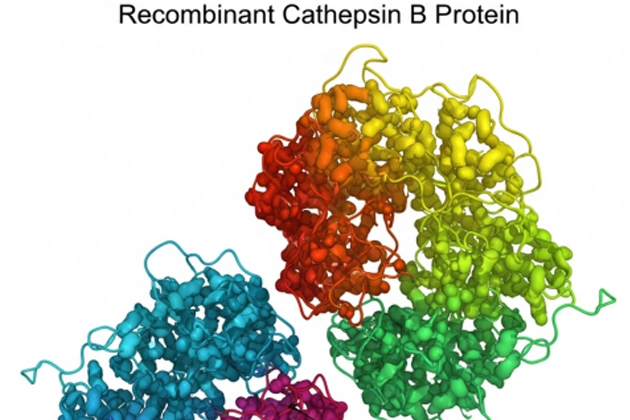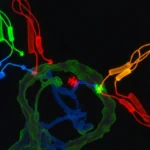Neurodegenerative disorders are a group of conditions that involve the progressive damage or death of nerve cells (neurons) in the brain and spinal cord. These disorders affect functions like memory, movement, balance, speech, and cognition, depending on which parts of the nervous system are affected.
Some common neurodegenerative disorders include:
- Alzheimer’s disease
- Parkinson’s disease
- Huntington’s disease
- Amyotrophic lateral sclerosis (ALS)
- Multiple sclerosis (MS)
Abnormal protein buildup, genetic mutations, oxidative stress, mitochondrial dysfunction, inflammation, environmental toxins, aging, etc., are a few reasons that lead to neurodegenerative disorders.
In order to understand and address various neurodegenerative disorders, researchers rely on Cathepsin B.
What is Cathepsin B?
Cathepsin B is a lysosomal cysteine protease that plays a key role in protein degradation and cellular waste clearance. Under normal physiological conditions, it helps maintain cellular homeostasis by degrading misfolded or damaged proteins. However, its dysregulation has been associated with neuroinflammation, oxidative stress, and neuronal death – the common signs of neurodegenerative diseases.
To understand the process of protein degradation and turnover, recombinant Cathepsin B protein is widely used.
What is Recombinant Cathepsin B Protein and Its Applications?
It is laboratory-produced protein that mimics the natural enzyme. This recombinant form allows researchers to study Cathepsin B activity in a controlled environment.
This is useful in studying:
Disease Pathways in Alzheimer’s Disease
In Alzheimer’s disease, harmful protein clumps called amyloid-beta plaques build up in the brain. These plaques damage brain cells and affect memory and thinking. However, Cathepsin B protein can break down these plaques.
So, scientists use recombinant Cathepsin B protein in the lab to study this process. They can see how well it breaks down different forms of amyloid-beta. They also test what pH or conditions are ideal and understand the disease pathway more clearly. This helps researchers find drugs that may stop plaque buildup and protect brain cells.
Neuroinflammation and Glial Activation
When the brain is under stress or injury, immune cells called microglia release Cathepsin B. A small amount helps protect the brain. But too much can lead to inflammation and damage.
By using recombinant Cathepsin B, scientists copy this process in the lab. They watch how brain cells react and which signals are turned on. This helps in understanding brain inflammation and in testing drugs to reduce it.
Genetic and Mutant Analysis
Some people experience changes in their genes due to inherited mutations or spontaneous errors in DNA. This affects the working of Cathepsin B and increases the risk of brain disease.
Researchers create mutant forms of recombinant Cathepsin B in the lab. They compare these to the normal version to see the difference. This helps them understand how gene changes affect brain health and thereby develop treatments for people with specific genetic risks.
Biomarkers for Early Diagnosis
As mentioned above, Cathepsin B helps break down misfolded, damaged, or extra proteins so the cell can stay healthy. However, its level rises in the blood during some neurodegenerative diseases.
At times, this can be used as a signal or biomarker to detect disease at an early stage. Scientists use its in vitro produced version, i.e., recombinant Cathepsin B, in tests like ELISA or Western blot to measure its levels more accurately. This can be further used to provide the right treatment and improve results.
Lysosomal Dysfunction in Parkinson’s Disease
In Parkinson’s disease, a protein called alpha-synuclein builds up in the brain. This damages cells that control movement. While lysosomes are like the cell’s recycling system, they stop working properly in Parkinson’s disease. However, Cathepsin B helps break down alpha-synuclein protein.
Researchers use recombinant Cathepsin B to study how this process works. They check what helps or blocks the enzyme’s activity. As a result, this helps them find ways to support lysosome function and slow the disease.
The Bottom Line
Recombinant Cathepsin B protein is a helpful tool for studying brain diseases. It is made in the lab and works like the natural enzyme found in our cells.
Scientists use it to learn more about diseases like Alzheimer’s and Parkinson’s. It helps them see how these diseases affect the brain. It is also used to test new treatments and find better ways to diagnose these diseases early.
As more people around the world get these brain disorders, this protein will become even more important. It can help create better medicine and improve care for patients.
However, no matter for what purpose you use recombinant Cathepsin B protein, make sure you get it from a reliable source to get the best results.










